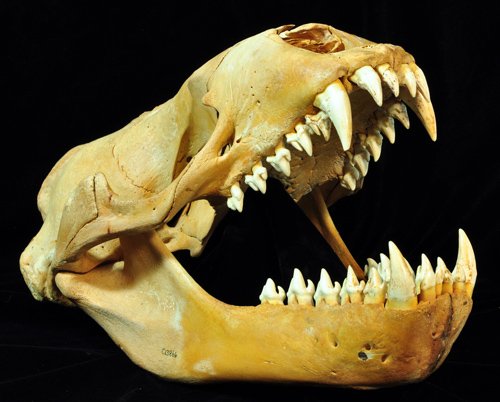Leopard seals filter feed like whales

LEOPARD SEALS, ANTARCTICA’S TOP predators, are geared to hunt at both ends of the food chain, new research has found.
Long known for their ferocious grip-and-tear feeding behaviours, leopard seals (Hydrurga leptonyx), rip penguins and seal pups apart with their front teeth by grasping and shaking them at the water’s surface. Tiny Antarctic krill (Euphausia superba) are also commonly found in their stomachs and scats but until now, scientists have been unclear about how leopard seals caught such small prey.
A study recently published in the journal Polar Biology, presents the first direct observations of leopard seals feeding on small prey.
“We now have the answer,” lead researcher David Hocking, from Melbourne’s Monash University, told Australian Geographic. “They are able to suck in prey and filter them out of the water using their cheek teeth.”
Leopard seals filter feed like whales
The seals use their tongues to generate strong suction pressure that draws small prey into their mouths, the researchers found. They then close their jaws and force the seawater out between their long cheek teeth, which act as sieves.
“This type of feeding behaviour is more commonly associated with humpback and blue whales, which use a specialised baleen plate as a sieve to strain krill and fish from seawater,” says Dr Alistair Evans from Monash University, who was involved in the study. “It’s the first time leopard seals have been caught in the act of filter feeding, adding a twist to the ferocious reputation of this sleek sea mammal.”
With strong front teeth (canines and incisors) designed for biting and tearing large prey, and long, thin cheek teeth (post-canines) that allow filter feeding, the leopard seal is equipped to change its diet to match the seasonable abundance of prey. This allows the species to thrive in harsh Antarctic environments.
“Smaller prey items are especially important over winter months when larger prey is less available because the penguins and seals are no longer concentrated into breeding colonies,” says David.
Museum Victoria zoologist Dr Erich Fitzgerald, who co-authored the study, says the species’ ability to switch between the two feeding behaviours is not typical of other large predators.
“The leopard seal is a paradox: on one hand it preys on penguins, and on the other it is superbly adapted for harvesting tiny plankton,” he says. “It is pretty unusual for a top predator to feed at the peak and also near the bottom of the food chain. This is equivalent to a lion dining on zebras, but also feasting on ants.”

A leopard seal skull – the front teeth are used for clamping down on bigger prey like penguins
and the back teeth are used for filter-feeding on krill. (Credit: Erich Fitzgerald)
Rare insight into leopard seal behaviour
The team conducted the research at Sydney’s Taronga Zoo, where they observed the behaviour in two resident seals, six-year-old female Sabine and four-year-old male Casey. These are the only leopard seals in human care in the world.
“Leopard seals are incredibly difficult to directly observe in the wild, living as they do in the ever-changing Antarctic pack ice,” says David.
Dr David Slip from Taronga Zoo’s Scientific Research Unit agrees. “Most [leopard seals] live in remote areas with difficult access and most of the important activities they do happen below the surface of the sea, sometimes way out in pelagic oceanic waters,” he says. “So simple questions like where do they go to feed, or how do they capture their food are not trivial to answer.”
Being able to study the seals in a controlled environment at Taronga Zoo allowed the research team to conduct precise, repeated experiments.
“Studies of these animals have their own limitations, but can provide vital information that, combined with information gathered from free-ranging animals, give us a much better understanding of the role of these animals in the ecosystem,” says Dr Slip.
For David and his team, the next step will be to document the leopard seals feeding in the wild.
“By using techniques like deploying animal-mounted sensors, including cameras and accelerometers, we should be able to determine what behaviours are being used during wild feeding, as well as determining what prey is being captured,” says David.
RELATED ARTICLES
Kayaking with Australian fur seals
Antarctic marine animals
Wallpaper: baby elephant seal
Sea lions: how they beat the bends
Sea lion poo good for ocean health
Best Antarctic photos of 2012
Life on Macquarie Island in the sub-Antarctic




